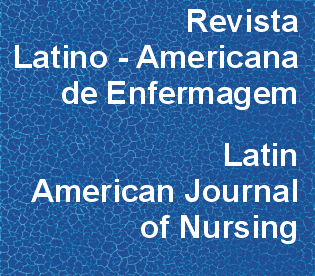Quality of life, clinical characteristics and treatment adherence of people living with HIV/AIDS
DOI:
https://doi.org/10.1590/0104-1169.3534.2508Abstract
OBJECTIVES: to assess the quality of life of people living with HIV/AIDS and verify its association with clinical characteristics and treatment adherence. METHOD: cross-sectional study conducted in a hospital in the state of Paraíba, Brazil. A questionnaire was used to collect socio-demographic and clinical data. The quality of life scale proposed by the World Health Organization and a questionnaire to measure treatment adherence were used. RESULTS: of the 314 interviewees, 190 (60.5%) were male, aged 43 years on average, 121 (38.5%) had attended up to five years of schooling, 108 (34.4%) received up to two times the minimum wage, and 112 (35.7%) were on sick leave. In regard to clinical variables, individuals with an undetectable viral load scored higher in all the domains concerning quality of life, with statistically significant differences in three domains. Regarding treatment adherence, 235 (73.8%) presented poor adherence and those who strictly adhered to treatment obtained better scores in quality of life. The results show that quality of life is better among individuals adherent to ART. Supporting people to adhere to the antiretroviral treatment should be a persistent task of healthcare workers and other people participating in the treatment, such as family members and friends.Downloads
Download data is not yet available.
Downloads
Published
2014-12-01
Issue
Section
Original Articles
License
RLAE’s authorship concept is based on the substantial contribution by each of the individuals listed as authors, mainly in terms of conceiving and planning the research project, collecting or analyzing and interpreting data, writing and critical review. Indication of authors’ names under the article title is limited to six. If more, authors are listed on the online submission form under Acknowledgements. The possibility of including more than six authors will only be examined on multicenter studies, considering the explanations presented by the authors.Including names of authors whose contribution does not fit into the above criteria cannot be justified. Those names can be included in the Acknowledgements section.
Authors are fully responsible for the concepts disseminated in their manuscripts, which do not necessarily reflect the editors’ and editorial board’s opinion.
How to Cite
Silva, A. C. de O. e, Reis, R. K., Nogueira, J. A., & Gir, E. (2014). Quality of life, clinical characteristics and treatment adherence of people living with HIV/AIDS . Revista Latino-Americana De Enfermagem, 22(6), 994-1000. https://doi.org/10.1590/0104-1169.3534.2508



